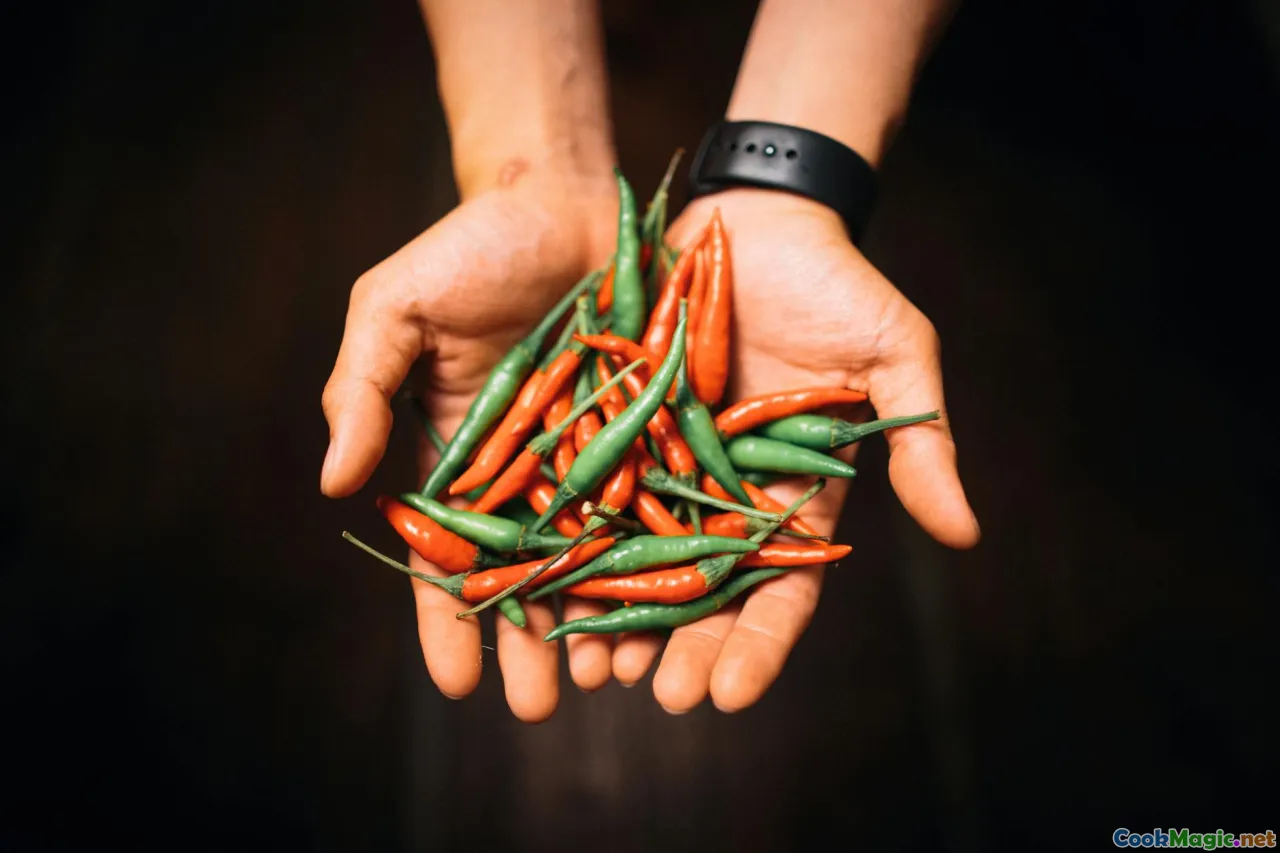Choosing the Right Thai Chili for Heat
8 min read Discover how to select the perfect Thai chili for your desired heat, exploring varieties, cultural significance, and culinary tips for fiery dishes. May 05, 2025 21:00
Choosing the Right Thai Chili for Heat
Imagine biting into a steaming bowl of Tom Yum soup, the aroma of lemongrass and lime zest mingling with a fiery kick that awakens every taste bud. The heat level of Thai dishes is legendary, and at the heart of that fiery experience lies the humble yet powerful Thai chili. But not all chilies are created equal — some deliver a gentle warmth, while others strike like lightning. Understanding the nuances of Thai chili varieties can transform your cooking from merely spicy to perfectly balanced, elevating your culinary creations to authentic heights.
The Cultural and Historical Significance of Thai Chilies
In Thailand, chili peppers are more than just ingredients; they are woven into the cultural fabric and daily life. Introduced to Southeast Asia from the New World in the 16th century, chilies swiftly became a staple, valued for their ability to add heat and flavor in a region famed for its complex, layered dishes.
Thai cuisine’s vibrant, spicy reputation is partly rooted in local preferences for bold flavors that stimulate the senses. From street food stalls in Bangkok to royal kitchens in Ayutthaya, chilies are cherished for their capacity to evoke emotion and communal bonding—spicy dishes are shared with gusto, often accompanied by cooling coconut or sweet mango.
Historically, different regions in Thailand have favored specific chili varieties based on climate, agriculture, and local tastes. The legendary Prik Kee Noo(bird’s eye chili) andPrik Chi Fa (mountain chili) are integral to regional identities, contributing unique heat profiles and flavor nuances.
The Varieties of Thai Chilies: An Overview
1. Bird’s Eye Chili (Prik Kee Noo)
Perhaps the most iconic Thai chili, the Bird’s Eye Chiliis small — about 1 to 2 inches long — but packs a punch that can range from 50,000 to 100,000 Scoville Heat Units (SHU). Its fiery intensity makes it a staple in salads, sauces, and sambals.**Sensory notes:**Bright, pungent, with a sharp, almost citrusy bite that lingers.Ideal for:Dishes requiring high heat, likePad Kra Pao (stir-fried basil with meat) or spicy dipping sauces.
2. Prik Chi Fa (Mountain Chili)
Larger and slightly milder than the bird’s eye, Prik Chi Fa measures around 20,000 to 30,000 SHU. Its milder heat allows for a more nuanced flavor, often used in soups or curries.
**Sensory notes:**Rich, smoky, with a hint of sweetness.Ideal for:Curries such asMassaman and milder stir-fries.
3. Prik Jinda (Jinda Chili)
This variety is medium-sized, about 2-3 inches, with medium heat—around 10,000 to 25,000 SHU—perfect for those who want a gentle kick without overwhelming heat.
**Sensory notes:**Fruity, slightly smoky.Ideal for: Pickles, salads, and dipping sauces.
4. Prik Chee Fah (Long Chili)
Longer, thinner, and milder, often used for garnishing and in salads.
**Sensory notes:**Mild heat, vibrant flavor.Ideal for: Fresh salads and as a garnish.
Matching Chili Varieties with Dishes
For Fiery Lovers
If your palate craves the intense burn of Thai street food, Bird’s Eye Chiliesare your best friends. They’re used liberally in heat-packed dishes likeSom Tum(green papaya salad) andLarb (meat salad). Be cautious—these chilies can turn a dish into a fiery inferno.
For Balanced Heat
For those who appreciate spice but seek balance, Prik Jindaoffers a gentle heat that complements flavors without overpowering them. It’s perfect inThai-style saladsormild curries.
For Milder Dishes
When the goal is flavor over fire, Prik Chi FaorPrik Chee Fah provide subtle heat, allowing ingredients like lemongrass, galangal, and coconut milk to shine.
Personal Tips and Anecdotes
During my travels through Thailand, I learned that the choice of chili often depends on the dish’s purpose and the diner's preference. I vividly remember a street vendor in Chiang Mai who carefully selected his chilies based on the customer's spice tolerance—offering a tiny, fiery bird’s eye chili for the brave and a milder, larger chili for those seeking just a hint of heat.
One memorable experience involved a family gathering where a mother handed her children tiny, bright red bird’s eye chilies with a smile, insisting they learn to appreciate the heat as part of their cultural heritage. That moment underscored how chilies are not merely ingredients but symbols of tradition, resilience, and community.
How to Use Thai Chilies Safely and Effectively
- Handling: Always wash chilies thoroughly. Use gloves if you’re sensitive to capsaicin or preparing large quantities.
- Adjusting Heat: Remove seeds and membranes to reduce heat if needed.
- Cooking: Add chilies early in the cooking process for depth or at the end for a fresh, sharp heat.
- Balancing: Pair fiery chilies with cooling ingredients like coconut milk, cucumber, or mint to balance the heat.
Final thoughts
Choosing the right Thai chili isn’t just about adjusting the spice level; it’s about embracing a cultural tradition and enhancing your dish’s flavor profile. Whether you seek the blazing intensity of a bird’s eye or the subtle warmth of a long chili, understanding these varieties unlocks a new dimension of Thai cuisine.
The next time you prepare a spicy Thai dish, take a moment to consider your chili choice. It’s a small decision with a profound impact—one that can turn a simple meal into an authentic culinary adventure. So, go ahead—select your chili with confidence, and let your taste buds embark on a fiery journey through Thailand’s vibrant flavors!
Happy cooking and may your dishes always be perfectly seasoned with the right amount of heat!









